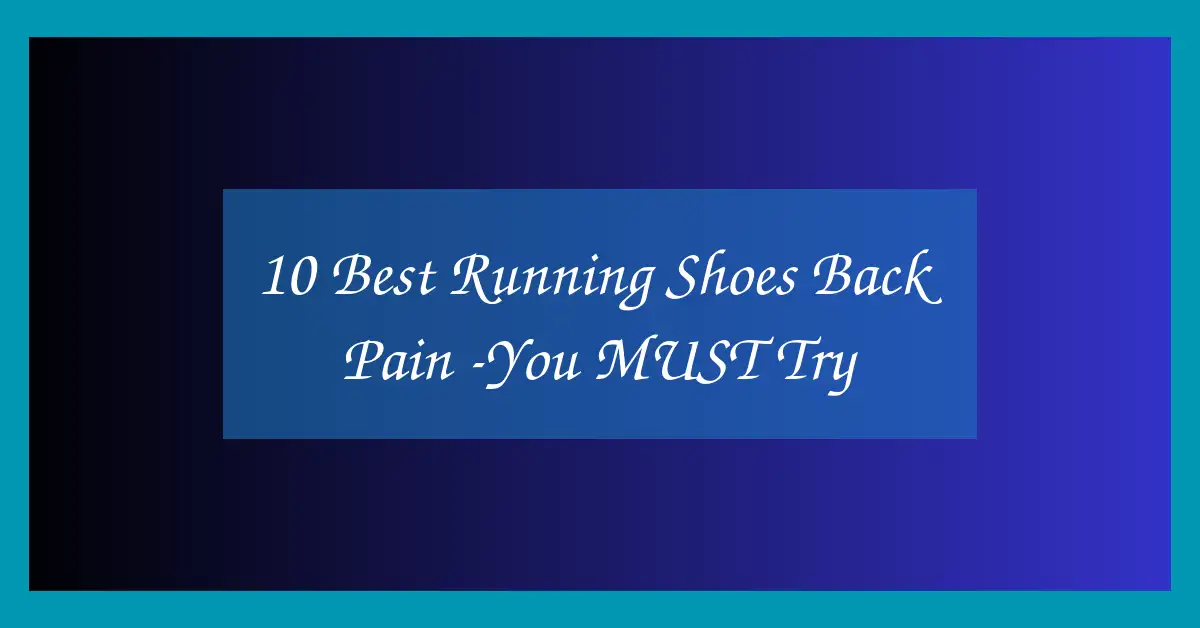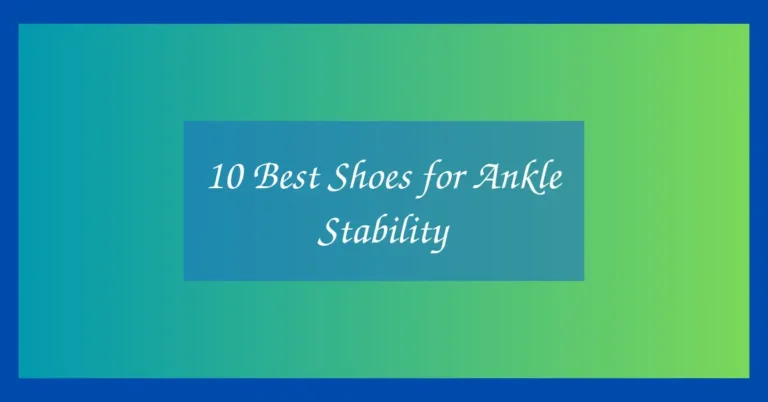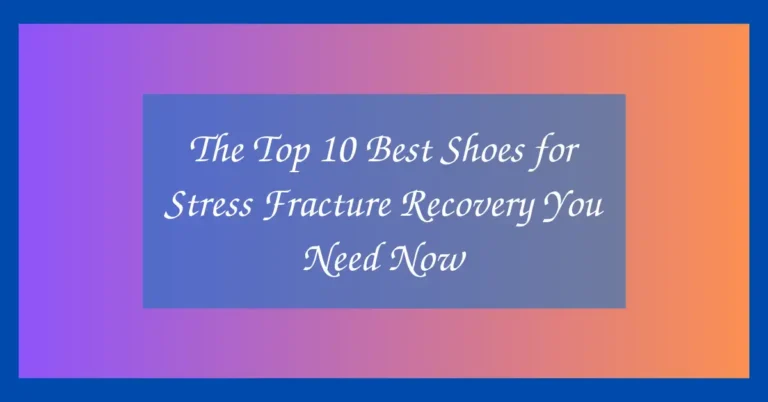10 Best Running Shoes Back Pain -You MUST Try
Finding the best running shoes for back pain is more than just a comfort issue it’s a critical part of staying active and injury-free. The right footwear can reduce impact on your spine, align your posture, and cushion every step. Whether you’re a seasoned runner or just getting started, support matters.
Back pain doesn’t mean you have to give up on running. Today’s footwear technology offers specialized solutions tailored to alleviate spinal pressure, promote better form, and absorb shock efficiently. In this guide, we’ll explore the best running shoes for back pain to help you run smart and stay pain-free.
Best Running Shoes for Back Pain
1. Brooks Glycerin 20
The Brooks Glycerin 20 stands out for runners who need plush comfort without sacrificing responsiveness. It features DNA LOFT v3 cushioning, offering a soft and adaptive underfoot feel that reduces joint impact and spine stress.
Its redesigned midsole and outsole provide smoother transitions, making it ideal for those suffering from chronic or occasional back pain. The wide base also supports better alignment during movement, reducing strain on the lower back.
The engineered mesh upper hugs your foot without creating pressure points, and the internal stretch bootie moves with you. These details help distribute weight evenly and reduce compensatory motion that might trigger back discomfort.
If you’re looking for a neutral shoe with high cushioning and a forgiving ride, the Glycerin 20 is a top-tier choice for everyday miles or recovery runs.
Pros
- Ultra-soft DNA LOFT v3 cushioning
- Smooth transitions reduce spinal impact
- Roomy yet secure fit
Cons
- May feel too soft for speed training
- Heavier than some competitors
2. HOKA Bondi 8
The HOKA Bondi 8 is one of the most cushioned running shoes on the market, making it a favorite for those managing lower back discomfort. Its thick EVA midsole absorbs shock across long distances, reducing stress on the spine and hips.
This model includes a rear crash pad and billowed heel design that promote a smooth heel-to-toe transition. That’s crucial for runners dealing with back pain, as it supports better gait and reduces jerky movement.
The upper is breathable and roomy, allowing for natural toe splay and stable foot positioning. The rocker design also encourages forward propulsion, minimizing vertical impact that contributes to back strain.
If you prioritize max cushion and need help correcting your stride to relieve pain, the Bondi 8 is a dependable and well-reviewed solution that delivers comfort with every step.
Pros
- Maximal cushioning for shock absorption
- Rocker sole helps reduce spinal compression
- Stable base for posture support
Cons
- Bulky for speedwork or racing
- Not ideal for narrow feet
3. ASICS Gel-Nimbus 26
The ASICS Gel-Nimbus 26 continues the brand’s legacy of soft, luxurious running shoes with excellent shock absorption. It combines FF BLAST™ PLUS ECO cushioning and rearfoot GEL™ tech to reduce pressure on the spine with every strike.
This model provides a stable platform thanks to its wide base and adaptive midsole. The engineered knit upper offers a snug yet flexible fit, making it a great choice for runners who need gentle lockdown without pressure.
Its soft underfoot feel and smooth transition help reduce lower-back fatigue, especially during long-distance training. If you’re looking for a daily trainer that supports your back with every mile, the Gel-Nimbus 26 is a top contender.
Designed with comfort-first engineering, it delivers consistency and durability that serious runners need, all while reducing impact and enhancing posture.
Pros
- Excellent impact protection with GEL and FF BLAST+
- Stable and wide platform
- Breathable and adaptive upper
Cons
- Break-in period required
- Slightly heavy for short runs
4. New Balance Fresh Foam 1080v13
The Fresh Foam 1080v13 from New Balance offers the perfect balance of cushion and responsiveness for runners managing back pain. The Fresh Foam X midsole provides a soft, supportive ride that absorbs shock and smooths out foot strikes.
This version has improved flex zones and a refined heel design that cradles the foot comfortably, preventing alignment issues that can contribute to back discomfort. The mesh upper stretches without losing its structure, offering support and breathability.
It works well for neutral runners who want all-day cushioning with a natural ride. The heel counter is secure without being intrusive, which helps stabilize your step and reduce stress along the spine.
Whether you’re logging daily miles or easing into running after injury, this model offers the support and comfort needed to run safely with back pain concerns.
Pros
- Soft yet responsive Fresh Foam X midsole
- Secure heel and flexible forefoot
- Breathable and supportive upper
Cons
- May feel too cushioned for racing
- Limited arch support for flat feet
5. Saucony Triumph 21
The Saucony Triumph 21 offers premium cushioning with its PWRRUN+ foam, giving runners with back pain a plush and springy ride. The shoe’s build emphasizes comfort and protection, ideal for long runs or recovery days.
Its wider base improves stability, which is especially helpful for runners who struggle with poor posture or lower back issues. The FORMFIT upper adapts to your foot shape, ensuring a secure but non-restrictive fit.
The cushioning doesn’t just soften impact it returns energy too, making each stride smoother and less taxing on your joints. The Triumph 21 also includes a new lacing system for improved midfoot support.
If you’re after a neutral, soft-cushioned shoe that promotes back health without feeling sluggish, the Triumph 21 is a reliable and durable choice.
Pros
- PWRRUN+ midsole for soft, bouncy cushioning
- Stabilizing wide platform
- FORMFIT upper molds comfortably
Cons
- Heavier than some neutral trainers
- May lack speed for tempo workouts
6. Nike Invincible 3
The Nike Invincible 3 is designed to prioritize comfort and shock absorption, making it a smart pick for runners with back pain. It features Nike’s ZoomX foam, offering a soft, responsive, and energy-returning ride to reduce repetitive impact on the spine.
This model also includes a wider forefoot and more stable platform compared to previous versions, helping promote balance and alignment throughout your stride. That’s a big plus for back support.
The upper offers breathable Flyknit material that wraps the foot snugly but flexibly. Combined with the exaggerated rocker geometry, the Invincible 3 encourages a smooth heel-to-toe roll, easing the load off your back.
Though it’s not a racing shoe, it excels at everyday mileage and recovery runs when back pain is a concern and you need plush protection without sacrificing movement efficiency.
Pros
- ZoomX foam for superior cushioning
- Wider and more stable base
- Smooth rocker for easier transitions
Cons
- Less versatile for fast workouts
- Bulky feel for some runners
7. On Cloudstratus 3
The On Cloudstratus 3 offers dual-layer CloudTec cushioning, giving back pain sufferers a soft yet firm base to run on. It’s known for its support and energy return, allowing for smoother strides that place less tension on the back.
The redesigned Helion superfoam midsole balances impact protection and forward propulsion, which is great for runners who need back-friendly cushioning without losing efficiency.
The external heel counter and wider base create a locked-in, supportive fit. These features help maintain better posture and minimize side-to-side movement that can worsen back strain.
If you’re looking for a responsive shoe that supports your form and absorbs shock effectively, the Cloudstratus 3 delivers a blend of innovation and comfort for spinal relief.
Pros
- Dual CloudTec layers cushion and stabilize
- External heel counter supports alignment
- Durable outsole for long-term use
Cons
- Runs slightly narrow in forefoot
- Less plush than some max-cushion options
8. Mizuno Wave Sky 7
The Mizuno Wave Sky 7 features the brand’s ENERZY CORE midsole for a cloud-like ride that cushions every impact ideal for reducing stress on the spine. It’s a neutral shoe with excellent shock dispersion.
One standout feature is the Wave Plate, which provides extra structure and support without making the shoe overly stiff. This contributes to a more controlled gait and upright posture, helping prevent overcompensation in the lower back.
The stretchy knit upper adjusts to your foot’s shape while holding it securely in place. This balance of flexibility and structure makes it a good match for runners with posture concerns and back issues.
With durable construction and a bouncy feel underfoot, the Wave Sky 7 helps you stay light on your feet while protecting your back mile after mile.
Pros
- ENERZY CORE midsole offers plush softness
- Wave Plate adds stability and control
- Breathable and adaptive knit upper
Cons
- Heavier than average trainers
- Not built for racing pace
9. Altra Torin 7
The Altra Torin 7 is ideal for runners seeking back pain relief through improved alignment and natural movement. Its zero-drop platform keeps the heel and forefoot at the same level, encouraging better posture and spinal balance.
The EGO MAX midsole delivers soft yet springy cushioning that absorbs impact while keeping your feet agile. This protects your lower back without sacrificing ground feel or responsiveness.
Its FootShape toe box allows your toes to spread naturally, reducing tension throughout the legs and lower back. The lightweight mesh upper supports long runs while keeping feet cool.
Perfect for runners who value natural motion and stable cushioning, the Torin 7 can help realign your stride and reduce the impact that often leads to back discomfort.
Pros
- Zero-drop encourages upright posture
- EGO MAX cushioning softens every strike
- FootShape toe box adds comfort
Cons
- Zero-drop may require adjustment time
- Less structured than traditional trainers
10. Adidas Ultraboost Light
The Adidas Ultraboost Light provides a premium blend of responsiveness and cushion, perfect for those needing back support during runs. Its BOOST foam is lighter and more energetic than previous versions, offering a soft landing and springy toe-off.
The Linear Energy Push system adds subtle structure, helping control foot motion and stabilize your gait both key for runners with back issues.
The Primeknit+ upper hugs your foot without constricting movement, delivering breathable comfort and consistent support. Its heel fit is snug and padded to reduce slipping or misalignment.
Ideal for road runners and those mixing casual and performance wear, the Ultraboost Light helps you stay comfortable and pain-free, even through long runs or urban miles.
Pros
- Lightweight BOOST cushioning for bounce and support
- Secure heel fit and supportive midsole
- Flexible, breathable Primeknit upper
Cons
- Less stable for overpronators
- Pricey compared to other trainers
| Product Name | Cushioning Type | Stability Support | Upper Material | Best For |
|---|---|---|---|---|
| Brooks Glycerin 20 | DNA LOFT v3 | Neutral | Engineered Mesh | Soft everyday runs |
| HOKA Bondi 8 | Full EVA | Stable Neutral | Breathable Mesh | Maximum cushion |
| ASICS Gel-Nimbus 26 | FF BLAST+ & GEL | Neutral | Engineered Knit | Long-distance |
| New Balance 1080v13 | Fresh Foam X | Neutral | Stretch Mesh | All-day comfort |
| Saucony Triumph 21 | PWRRUN+ | Neutral | FORMFIT Upper | Recovery runs |
| Nike Invincible 3 | ZoomX Foam | Wide Platform | Flyknit | Shock protection |
| On Cloudstratus 3 | Helion Superfoam | External Heel | Engineered Mesh | Efficient stride |
| Mizuno Wave Sky 7 | ENERZY CORE | Wave Plate | Knit | Impact dispersion |
| Altra Torin 7 | EGO MAX | Zero-Drop | Engineered Mesh | Natural motion |
| Adidas Ultraboost Light | BOOST Foam | LEP System | Primeknit+ | Urban runs |
Best Running Shoes for Back Pain Buying Guide
1. Cushioning That Supports Your Spine
When dealing with back pain, cushioning becomes one of the most important features in a running shoe. Look for midsoles that absorb shock and reduce vertical load on the spine. Technologies like ZoomX, Fresh Foam, and PWRRUN+ offer plush landings without sacrificing bounce or responsiveness.
2. Stability Without Being Rigid
Spinal alignment is directly influenced by how your feet strike the ground. A stable platform prevents overpronation or supination that can aggravate the lower back. Look for shoes with wide bases, external heel counters, or embedded stability systems that guide your gait naturally.
3. Fit and Comfort
Shoes that fit poorly can cause compensatory motion, worsening back pain. Choose models with adaptable uppers, roomy toe boxes, and secure heel cups. Mesh or knit uppers often balance support and breathability while molding to your foot’s shape.
4. Drop and Stack Height
Shoe drop affects posture. A zero-drop shoe like the Altra Torin 7 promotes a more upright form but may require an adjustment period. If you’re not used to minimal drop, opt for moderate drop shoes to ease your transition while still reducing spinal stress.
5. Usage Type and Terrain
Think about how you’ll use the shoes: long-distance running, recovery jogs, treadmill workouts, or urban miles. Back pain sufferers often benefit most from cushioned shoes during long runs and structured ones for uneven surfaces. Choose accordingly.
FAQ
What type of running shoe is best for back pain?
The best running shoes for back pain feature plush cushioning, wide and stable platforms, and proper arch support. They should encourage proper alignment and minimize impact with every step. Look for brands that emphasize shock absorption and ergonomic design.
Are zero-drop shoes good for back pain?
Zero-drop shoes can help realign posture and encourage a natural gait, which may reduce back pain over time. However, they may require an adaptation period if you’re switching from traditional high-drop shoes. Gradually transitioning is key to avoiding discomfort.
Should I choose soft or firm cushioning for back issues?
Soft cushioning is often better for back pain because it reduces impact forces on the spine. However, it should still offer a degree of firmness for stability. Overly plush shoes without structure may compromise alignment and aggravate the issue.
Do running shoes really help with lower back pain?
Yes, the right running shoes can significantly reduce lower back pain by correcting gait issues, absorbing shock, and supporting spinal alignment. Footwear plays a crucial role in how your body absorbs impact during movement.
Is heel-to-toe drop important for back pain?
Heel-to-toe drop affects your posture and foot strike. Lower drops encourage midfoot landings, which may reduce impact. High drops promote heel striking, which can lead to jarring movements if not supported correctly. Choose based on what aligns best with your natural gait.
How often should I replace shoes to avoid back pain?
Replace running shoes every 300 to 500 miles or once you notice reduced cushioning and support. Worn-out shoes lose their shock absorption ability and can lead to alignment problems, making back pain worse over time.
Verdict
If you’re a runner dealing with back pain, choosing the right footwear is essential to your recovery and long-term performance. Prioritize cushioning that protects your spine, stability that aligns your body, and a fit that prevents stress points. Whether you prefer plush rides like the HOKA Bondi 8 or structured motion control from the On Cloudstratus 3, each shoe on this list offers back-friendly features to support your stride. Don’t ignore pain run smarter with the right gear.







